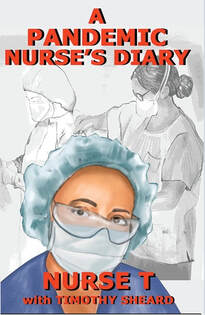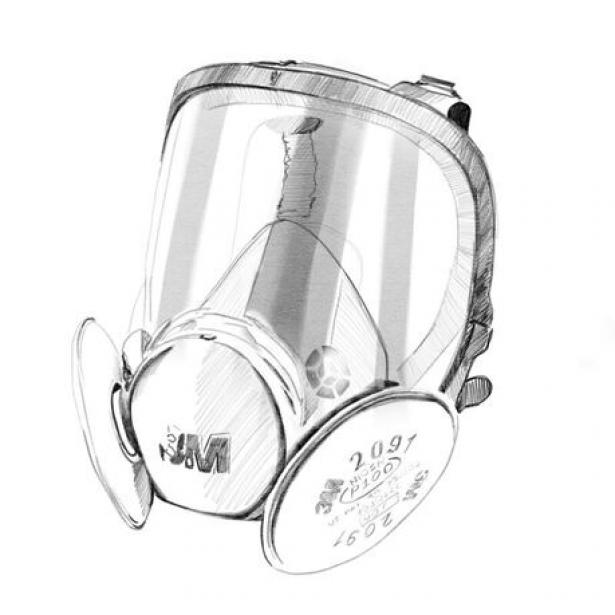As a nurse who worked in New York City’s Emergency Rooms and Intensive Care Units for the better part of 30 years and left nursing over a decade ago, when the COVID19 pandemic hit New York and hospitals I had worked in appeared on the daily news shows, I still felt I could not imagine what hospital workers in those very hospitals were going through, or how they made it through their days and nights.
A Pandemic Nurse’s Diary
By Nurse T, with Timothy Sheard, drawings by Anna Usacheva
Hard Ball Press; 144 pages
October 15, 2020
Paperback: $15.00
ISBN (paperback): 978-1-7344938-4-9
(cloth) 978-1-7344938-5-6

Here is a book written by a nurse in the center of the pandemic. Accompanied by beautiful drawings of hospital workers caring for patients, in their PPE, by Anna Usacheva, this is a narrative which helps us understand both COVID19 and the workers who faced it. It is a book well worth the modest price for aspiring health care workers to obtain – not only to better understand the realities they might face if they joined our profession, but to understand the deep solidarity health workers experience from each other.
The book begins in January with the news from China and Nurse T’s instinct that we faced a coming catastrophe. In the third week of February, there is big trouble in Europe. Italy is overwhelmed by COVID19. But elected officials in New York aren’t doing enough. Nurse T and her colleagues wait more desperately than usual for their employer to provide them with Inservice Training about COVID19.
In March of 2020, Nurse T and author-nurse Timothy Sheard began to tell the stories of the ICU war zone, where many times more patients “crashed” and needed “coding” than usual in one shift. Nurse T describes the shortage of protective equipment – the now familiar term “N95” mask, which she had to preserve during a 12 hour shift (and other hospital workers around the country have had to preserve for as much as a week, according to many stories.)
Throughout the book Nurse T explains things about hospitals, and COVID19 in particular, that the general public does not know. For example, she explains what Negative Pressure Isolation rooms are and why COVID patients need them. She describes the struggle the medical teams experience searching for any medication and treatment that can help these patients with often strange symptoms. She also explains that Black and Latinx patients are being especially hit hard by the novel virus and why.
A name pops up in the book regularly – the nursing assistant Lily, working alongside Nurse T with knowledge and compassion. But one day Lily starts to feel aches. Knowing what might happen to her, Lily was filled with fear. She was admitted to the hospital with COVID19. Fortunately, Lily makes it and is discharged home.
In April, as medical workers from all over the country traveled to New York City to help in the crisis. A young “travel nurse” from Wyoming arrived at the hospital. She had never worked in Intensive Care, in fact, had just graduated from nursing school. Her family was in dire straits because of the pandemic and the $3,000 per week being paid to travel nurses would be a solution to her family’s troubles. An experienced nurse took the new arrival under her wing, because she was becoming overwhelmed. In the end, Nurse T felt the young nurse from Wyoming would end her tour in New York ready for anything nursing could throw at her.
In June, COVID cases in New York City came down, but a new type of patient arrives in the Emergency Room – what are now being called “the long haulers”. These COVID19 patients have recovered from their infection, but then experience continuing symptoms like fatigue, fever, and anxiety, to name a few.
In July, the hospital workers start to worry about themselves and how they will be able to return to working in health care in the longer term. The book ends with some helpful meditations and exercises that might be very helpful in easing the stress of facing COVID19 at the workplace.
What happens to the hospitals and hospital workers after the pandemic is over is another story I hope Nurse T and Timothy Sheard will tell. But meanwhile, at the beginning of October, COVID cases are rising again in New York City. How will Nurse T and her colleagues cope?
This book should be purchased (a bulk discount is available – contact Hard Ball Press (info@hardballpress.com) by health care worker unions and nursing and medical schools. It will be of great help to any young person considering entering the world of health care.
[Marilyn Albert is a Retired Registered Nurse.]


Spread the word